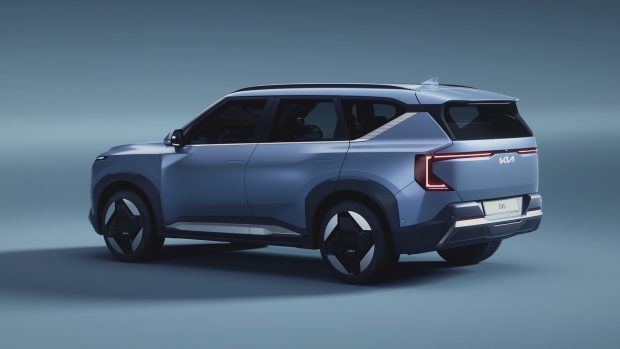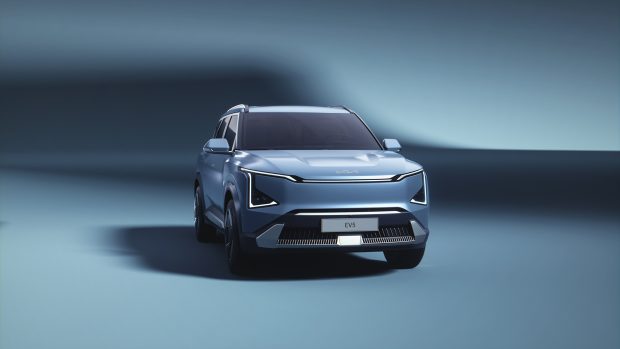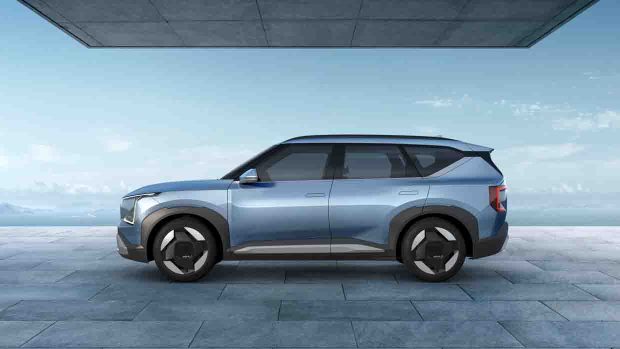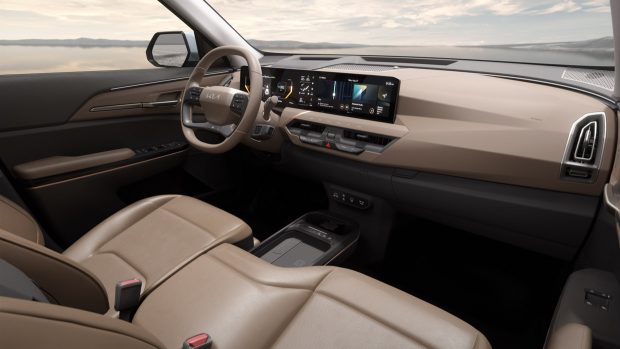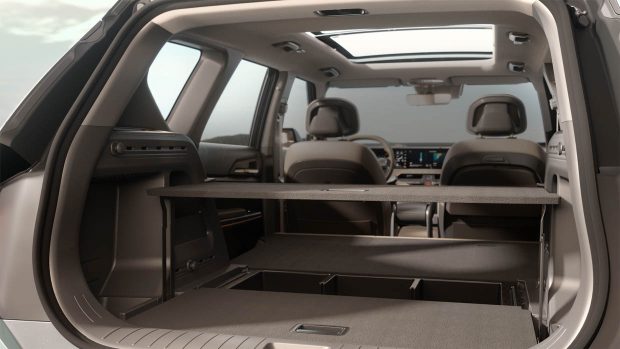-
Car Reviews
- All reviews
- Midsize SUVs
- Small cars
- Utes
- Small SUVs
- Large SUVs
- Large cars
- Sports SUVs
- Sports cars
- Vans
Latest reviews
- Car News
-
Car Comparisons
Latest comparisons
- Chasing Deals
400-volt platform key to Korean marque push for lower prices and greater volumes as its EV lineup expands
Kia Australia is adamant that Chinese-built versions of the forthcoming EV5 midsize SUV confirmed for the local market will be of equal quality to South Korean-made examples slated for other markets.
Talking to Chasing Cars at the recent EV9 launch, Kia Australia’s chief product planner Roland Rivero explains that EV5 is “just a template” and that “it doesn’t matter where the factory is [located], they’re designing a product to meet our ADRs […] and ANCAP regulations.”
“It’s Kia built quality, not ‘China’ built quality.”
As previously reported, Chinese sourcing means that the Sportage-sized electric midsize EV5 will arrive considerably sooner than South Korean production currently slated to commence in early 2025.
“[Kia’s] China [manufacturing] pretty much starts now: November build and they’ll probably launch [manufacturing] at the beginning of January [2024]. And we’re not that far off them [in accessing vehicles] to be completely honest.”
“Other markets will source from the Korean factory and they’re at least 12 months behind. [But Australia] is pretty keen to speed to market [with EV5].”
When asked whether the combination of EV5’s confirmed 400-volt architecture and Chinese build would allow a reduction of cost and pricing and the afford larger volumes, Rivero responds with an empathetic “yes, yes and yes!”
“We’re looking at bigger volumes for the EV5. We’re quite comfortable to go with the 400 volt. We think that we’re able to get the price right and grow volumes.”
Tesla famously switched the production of its Australian-delivered Model 3s to China, in a move that saw the vehicle purchase price drop considerably.
To date, the 800-volt EV6 has been hamstrung by modest supply, while the upper-large EV9, with a starting price just under $100K, is reportedly capped at just 100 units per month for its first year of local release.
“The 800-volt architecture has been a great unique selling point for EV6 and EV9 but let’s not kid ourselves. The ability to take advantage of 800 volt [charging rate capability] via an ultra-rapid 350-kilowatt charger is a case of ‘good luck’!
“Tesla hasn’t gone there [to 800 volts] and there are a lot of volume EVs that happily plug along and sell at great volume via 400 volt. We’re now blessed with Tesla [now] saying that the algorithm that prevents using [its] chargers is now slowly but surely going away. And [Tesla’s] aren’t 350kW chargers.”
“Ampol has a grand plan – and it’s a great plan by the way – of rolling out [AmpCharge] chargers all across the country and they have real estate for it, and none of them will be 350kW. Then there’s BP Pulse – they’re not 350kW [either].
In simple terms, a 400-volt platform typically lengthens charging speeds by 50 percent compared with 800 volt.
When asked whether the EV5’s 400-volt Chinese formula – that will also form the basis for a future EV4 sedan – changes Kia’s EV skew to align more closely to Tesla Model Y in market, Rivero replies “very much so.”
In offering a more wallet-friendly if slower-charging 400-volt format together with a more premium ultra-fast recharge-capable 800-volt option, Kia is both diversifying its EV pitch to a broader customer base. A 400-volt platform lengthens charging speeds by 50 percent compared to 800-volt, though fast charging costs more.
However, due to increasingly prevalent shortcomings of Australian DC fast-charging infrastructure, it’s become a rare occurrence where outlets deliver anything like 350kW much of the time.
The EV5 is expected to launch in Australia in the first half of 2024. The electric small EV3 SUV is expected to join it later in the year, with the electric EV4 sedan expected locally in 2025.
Latest news
About Chasing cars
Chasing Cars reviews are 100% independent.
Because we are powered by Budget Direct Insurance, we don’t receive advertising or sales revenue from car manufacturers.
We’re truly independent – giving you Australia’s best car reviews.
